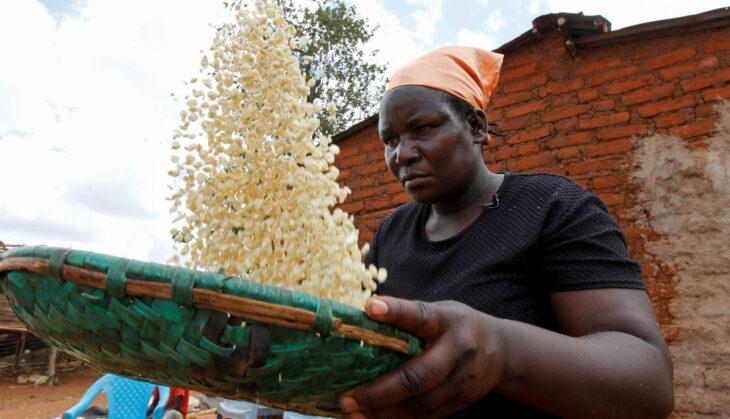Africa-Press – Mauritius. According to the United Nations Conference on Trade and Development, “Africa imported about 85% of its food (2016-2018) from outside the continent,” amounting to $35bn and is expected to reach $110bn by 2025.
At the same time, sub-Saharan Africa has recorded “the highest rate of agricultural production growth of any region of the world since 2000”. How do these two trends balance out?
Higher production Food-security challenges have long-overshadowed the progress made on the continent. Several factors have contributed to this perception.
“The 2010/2011 global food crisis and increase in food imports looked alarming.
$7bn in 2000 ramped up to $40bn by 2010. What we didn’t know was that Africa has the fastest-growing agricultural sector in the world, in terms of percentage growth.
Agricultural production has been increasing at a yearly 4.3% rate (inflation adjusted) while the world average is only at 2.75%,” Thomas Jayne, a professor of agricultural, food and resource economics at Michigan State University, tells The Africa Report.
The tide has changed since then, as he adds: “Fast-forward to 2021, three things have happened. World food prices have gone down, so food imports don’t cost as much as they did in 2010.
Most African countries are self-sufficient, and there are four that are accounting for most of the imports. They are either oil importers or ‘fragile states’ with major governance problems: Nigeria, Angola, the Democratic Republic of Congo and Somalia.
Meanwhile, there are at least a dozen countries who are net agricultural exporters and have a food surplus balance. ” Though this is good news, African countries continue to import “soybeans, wheat and rice, [which] are staple crops of the African diet.
At the same time, sub-Saharan Africa has been a strong producer of historic cash crops: coffee, cocoa, tea and cotton. However, the [production] growth is happening in edible fruits, nuts, vegetables – and that’s where the opportunity to trade is,” says Michael Sudarkasa, CEO of the Africa Business Group.
Population growth and urbanisation By 2050, “more than half of global population growth is expected to occur in Africa,” according to the UN. This in turn has accelerated urbanisation, changing lifestyle and consumption trends.
This creates a dichotomy between the food needs of the continent and local production. “It is expected that in 20 years more than 50% of the African population will live in cities and will further impact food needs,” Quentin Rukingama, managing partner at JBQ Africa, tells The Africa Report.
He adds: “If we take Kenya’s example, the rural population will have the time to cook [maize-based] ugali. However, when casual workers come to cities from rural areas, they will struggle to have time to cook.
So they will be picking up food along the way, something like chapati or some sausages, eggs – affordable meals. When we look at the content of these meals, ugali is made out of locally produced maize flour but when it comes to the chapati, you need imported wheat flour.
” Shifting eating habits are not the only explanation for the trends.
If “[we] put all African states together, they are not the best producers of wheat flour, as the weather and soil don’t allow them to cultivate it at the level of demand.
So there is an increase and a shift in imports,” Rukingama adds. As of late, Covid-19 has also had an impact. “Despite the agricultural boom, there was waste amidst the pandemic due to a lack of storage facilities, logistical and overall infrastructure issues,” Sand K.
Mba, executive director at the Africa International Trade & Commerce Research, tells The Africa Report. Disparities and opportunities A holistic framework could help the continent.
Governments took a step in this direction by signing the African Unions’s Maputo Declaration (2003), whereby administrations agreed to target 10% of public spending for agriculture.
“Most countries are at 2%-3% and have starved their own agricultural research systems.
This explains why yields are not growing, why they are not growing enough cereals” says Michigan State University’s Jayne. Implementing [the AfCTFA] will encourage African states to import from each other.
Their own producers will benefit rather than producers in the rest of the world. Other countries have been able to increase their food production. “Ethiopia, Rwanda, Zambia (which enjoyed white farmers who settled from Zimbabwe), Nigeria, Ghana, Morocco and Senegal are steering in the right direction”, according to Rukingama.
This is a multi-level operation that entails “creating markets, making sure production is aligned with markets, creating the right infrastructure to move the goods to consumption areas, focusing on improving productivity of small-holder farmers (extension services, agri-husbandry knowledge, input through fertiliser or climate change mitigation, irrigation),” he adds.
While these policies remain crucial, intra-African trade could also be an alternative import strategy. “Most of Southern Africa has the topography for grains and there is also a major West African rice initiative, so the issue is to get broader economies of scale.
The continent is predominantly composed of small-holder farmers who are producing for personal food security. It is now about how you look at small-holder farming as a business rather than subsistence farming,” says Sudarkasa.
Trade strategies For Rukingama, “a clear agricultural strategy is needed. We should focus on what we can produce based on our soil, land capacity and weather.
It means investing in food crops like roots, maize, beans and promoting them. They can be produced in a good chunk of African countries. Other crops can be exported for high dollar value such as avocado, berries, exotic fruits, vegetables and even horticulture.
” This could perhaps be possible with better intra-African trade tools. The African Continental Free Trade Area (AfCFTA) agreement, ratified by 36 countries, is amongst them.
“Implementing [the AfCTFA] will encourage African states to import from each other. Their own producers will benefit rather than producers in the rest of the world,” adds Jayne.
Indeed, the majority of the population in sub-Saharan Africa –60% – is smallholder farmers, accounting for around 23 % of its GDP, according to a McKinsey report entitled Winning in Africa’s Agricultural Market (2019).
It is a potential asset, but only if it goes along with “strengthening the national capacity for food and commodity production for regional markets [providing] a solid foundation for nations to boost regional trade,” Abebe Haile-Gabriel, assistant director-general and regional representative for Africa at the Food and Agriculture Organisation, told media.
He continued: “Policies and programmes should encourage the private sector to increase new investment, add value to products, compete with imported goods, and create jobs.”
For More News And Analysis About Mauritius Follow Africa-Press







